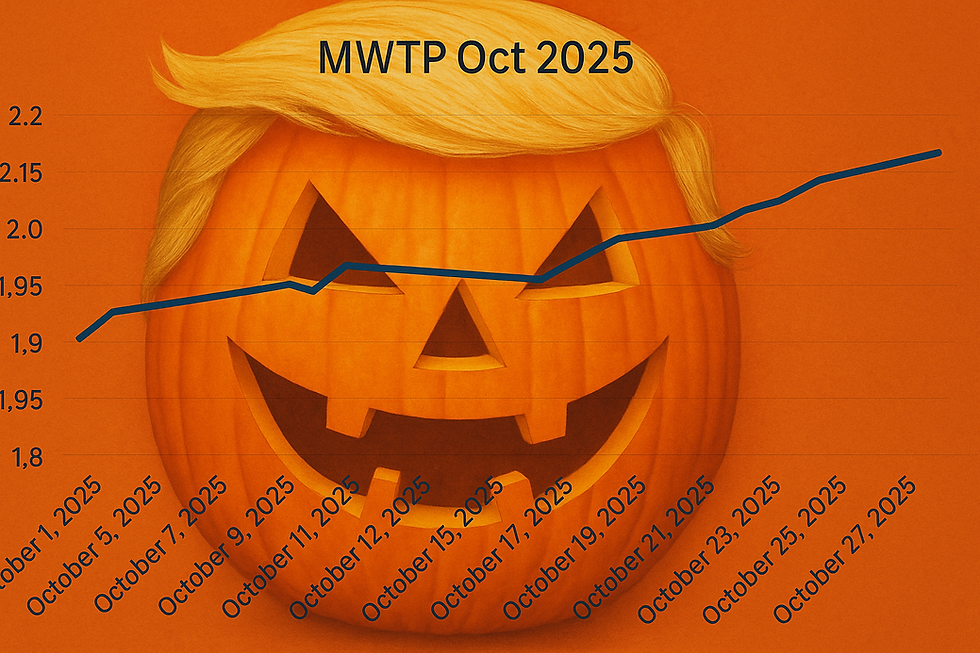The End of an Era: The Last U.S. Penny Has Been Minted
- Harrison Shrair
- 31 minutes ago
- 3 min read
What It Means for Metals and Recycling
Wes Foster - wf@labrecy.com

In a historic shift, the United States has officially minted its last penny. After more than 160 years in circulation, the iconic copper-colored coin is being retired—following years of debate, cost analysis, and mounting pressure from the metals and recycling industries. The U.S. now joins a growing list of countries, including Canada, that have already phased out their one-cent coin for economic and logistical reasons.
This moment marks more than just the disappearance of a familiar piece of pocket change—it signals a meaningful shift in how governments value manufacturing costs, how consumers will transact, and how the metals market responds to changing demand cycles.
Canada Led the Way Over a Decade Ago
Canada stopped minting pennies in 2012 and fully removed them from circulation shortly after. The decision saved the Canadian government millions annually, as the production cost for each penny far exceeded its face value. Retailers adapted quickly, rounding cash transactions to the nearest five cents while electronic payments remained exact. The transition was smooth, widely accepted, and ultimately viewed as a success.
The U.S. watched closely—but political symbolism, nostalgia, and lobbying interests kept the penny alive longer than financial logic supported.
Pennies Cost More to Make Than They Are Worth
For years, U.S. pennies have been a net loss for taxpayers:
Each penny cost more than 2 cents to produce, when factoring in zinc, copper plating, minting labor, and logistics.
The U.S. Mint spent hundreds of millions annually producing a coin most Americans refused to use.
Billions of pennies sat in jars, drawers, and piggy banks—essentially removed from circulation—forcing the Mint to produce even more.
The decision to stop minting pennies is ultimately a cost-saving measure driven by simple economics: the intrinsic value of the materials and the manufacturing process surpassed the coin’s monetary value.
What This Means for the Metals Industry
Though a penny looks like copper, it has long been 97.5% zinc with only a thin 2.5% copper plating. Ending penny production has several notable effects across the metals market:
1. Reduced Federal Demand for Zinc
With billions of pennies minted each year, the U.S. Mint was a consistent institutional buyer of zinc. Shutting down penny production removes that demand overnight. While this won’t shock the global zinc market, it does create a measurable downward shift in domestic consumption.
This may benefit recyclers and smelters looking to rebalance inventories or shift output toward higher-value alloys.
2. Small but Symbolic Impact on Copper Markets
The copper content in pennies has not been sizable for decades, but the announcement still carries sentimental weight in a market where copper is increasingly strategic for electrification, EV infrastructure, and renewable energy.
Even a symbolic government shift away from copper-intensive coinage reinforces the long-term trend: copper belongs in wires, motors, and batteries—not in disposable currency.
3. Increased Focus on Metal Efficiency and Sustainability
The penny’s retirement signals a broader national conversation about responsible metal use:
Why waste refined metal on items with no lasting economic value?
How can government agencies adopt more sustainable procurement strategies?
How should recyclers adapt to shifting demand for specific alloys?
The metals industry—especially recyclers—may see the U.S. decision as a win for efficiency and sustainability.
4. Potential for a Domestic Zinc Surplus
With one of the country’s largest zinc consumers stepping back, domestic refineries and recyclers may temporarily experience excess supply. This could result in short-term pricing adjustments or an increase in zinc exports.
How Businesses and Consumers Will Adjust
Like Canada, the U.S. will move to cash rounding:
Electronic payments remain exact.
Cash transactions round to the nearest five cents—up or down.
Retail and banking systems already handle this overseas, and the change is expected to roll out smoothly.
Consumers lose nothing of value, while the federal government stands to save significant money annually.
A Natural Progression in a Digital Economy
In a world rapidly shifting toward tap-to-pay, online commerce, and mobile transactions, the penny has increasingly been a relic. As we move further into a cash-optional economy, eliminating inefficiencies—like the penny—is a logical step forward.
The metals industry now shifts attention toward high-value applications where copper, zinc, aluminum, and steel deliver maximum performance and return on investment.
Conclusion
The last U.S. penny marks the end of an era, but it also highlights a forward-thinking shift in how America uses and values its metals. Following Canada’s lead, the United States has recognized that a coin costing more to make than its worth is no longer practical in a modern economy.
For metal producers, recyclers, traders, and manufacturers, this is a moment that symbolizes:
smarter resource allocation,
reduced waste,
new demand patterns, and
a future where metals are used where they matter most.
The penny may be gone—but its retirement opens the door for a more efficient metals landscape.
For more metal market updates and the best prices around, email wf@labrecy.com
.png)



Comments